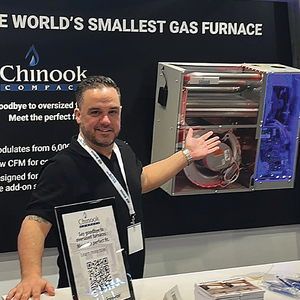Recent research on residential ventilation presented at 2007’s American Society of Heating, Refrigerating, and Air-Conditioning Engineers conference is consistent with past research and current practice in Europe. Why is this news? Because it’s inconsistent with ASHRAE Standard 62.2: the Residential Ventilation Standard for the United States.
Research titled “Window Usage, Ventilation, and Formaldehyde Concentrations in New California Homes” (Offerman et. al.) measured formaldehyde levels in 100 recently built California homes. Offerman found that 0.5 air changes per hour (ACH) were necessary to dilute formaldehyde from building materials to an acceptable level. An ACH means that the volume of air in a house is completely replaced in an hour.
While these findings are consistent with research published in 2004 (Sherman and Hodgeson), they’re also about three times higher than the ASHRAE 62.2 rate. This means that the standard rate can’t adequately control formaldehyde levels in new homes.























